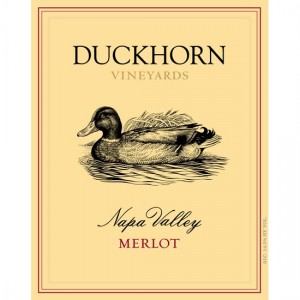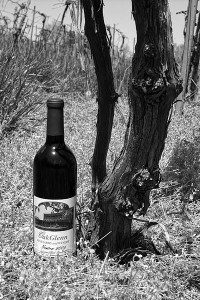by Lorri | Jul 16, 2014 | Tips, UnCorked
 As I type this Uncorked, I am heading west to wine country. Of course I am elated about my trip, but wine region retreats don’t always feel like a vacation at the beach, where the days are filled with wake up, soak up the sun, nap, have an amazing dinner and repeat. For the wine enthusiast, wine region trips, though pleasurable, are often quite stressful. I tend to think of them as being similar to a fast and furious visit to the Louvre — trying to see and experience everything in just one day.
As I type this Uncorked, I am heading west to wine country. Of course I am elated about my trip, but wine region retreats don’t always feel like a vacation at the beach, where the days are filled with wake up, soak up the sun, nap, have an amazing dinner and repeat. For the wine enthusiast, wine region trips, though pleasurable, are often quite stressful. I tend to think of them as being similar to a fast and furious visit to the Louvre — trying to see and experience everything in just one day.
And I’m not alone. I have talked with several readers returning from spectacular wine regions feeling as if they need a vacation from their vacation. It happens to all of us. Just yesterday I had to pull myself back into reality during my planning — so many wineries, so little time — and I know it will happen again next time.
Most of us traveling to wine regions for vacation will have already confirmed appointments before arriving. But keep in mind, the appointments can be part of the stress. We have a tendency to want to schedule as many as possible in one trip in order to taste and experience them all. But this type of planning can lead to feeling overbooked and exhausted, not far off from the type of day at the office — running from appointment to appointment — the reason for the vacation. If you are scheduling only VIP appointments and vineyard tours, I recommend no more than three in one day. And if possible, schedule appointments at vineyards near each other on the same day to help to slow the pace of your day.
This brings us to the next tip. It’s very easy choosing your top wineries to visit and the wines you enjoy. What isn’t easy is when you are leaving one winery and realize your next appointment is an hour drive away. Arriving late can delay the tour start time and make a not so wonderful first impression at the winery.
Researching the locations of the winery is vital. Call me old-fashioned, but I keep a paper road map of the region I am visiting in front of me when making appointments. It helps me get my bearings and visualize the travel for the day. Last week my husband, being a technology guru, walked in and laughed upon seeing my road maps spread across the floor and table.
His advice was simple: “There’s an app for that.” For the tech-savvy, there are many easier-to-use tools to plan your schedule than my road maps. Google Maps and Map Quest are a couple. If you visit the winery website it will usually have links for directions to the vineyard.
If you are a foodie like me, food is just as important as the wine. I remember my first visit to Napa Valley, casually arriving (and very eager to eat) at one of the top-rated restaurants in the area. I quickly learned that, as with winery appointments, the reservation is a must. When planning your days for wineries, consider restaurants also. Call well in advance, because many will be booked as far ahead as several months.
If you plan ahead, know your map and slow down the pace, it can feel like a day at the beach — wake up, drink wine, enjoy beautiful scenery, nap, have an amazing dinner and start over the next day!
by Lorri | May 28, 2014 | UnCorked
 New Zealand is generally known for its racy, bracingly acidic sauvignon blancs, but pinot noir is quickly joining in the limelight.
New Zealand is generally known for its racy, bracingly acidic sauvignon blancs, but pinot noir is quickly joining in the limelight.
New Zealand’s South Island is one of the world’s most exciting hot spots for the pinot noir devotee. This grape has a reputation for being finicky outside of Burgundy and doesn’t adapt well to many new areas, but the Otago region’s pinot noir production is growing at a phenomenal rate, with new wineries opening every year.
The cool climate of the South Island is comparable with the best growing regions for this grape. Central Otego grows New Zealand’s (and the world’s) most southerly grape vines, some of them cultivated south of the 45th parallel. It is New Zealand’s only wine region with a continental climate. Most vines are planted on hillsides to gain maximum sun exposure.
The region has a traditional winemaking style much like you will find in benchmark European wine regions.
Much of the influence is from the many New Zealand winemakers working second annual vintages in Europe and gaining a wider perspective on the world of wine (known as flying winemakers).
Another positive influence is the reverse migration of mostly young French winemakers joining in during the New Zealand harvest and winemaking. These influences continue to show in the restrained delicate pinot noir styles from the South Island.
THE VALUES
- 2012 Dashwood Pinot Noir, New Zealand (about $17 retail)
- 2012 The Seeker Pinot Noir, New Zealand (about $14 retail)
- 2012 Brancott Pinot Noir, New Zealand (about $16 retail)
THE SPLURGES
- 2012 Roaring Meg Pinot Noir, New Zealand (about $23 retail)
- 2012 Mount Difficulty Pinot Noir, New Zealand (about $40 retail)
- 2012 Greywacke Winery Pinot Noir, New Zealand (about $39 retail)
by Lorri | May 21, 2014 | UnCorked
 The Art of Wine is one of my favorite wine events of the year. This Northwest Arkansas event will draw guests from around the country and supports the Walton Arts Center’s award-winning arts, learning and education programs, all dear to my heart.
The Art of Wine is one of my favorite wine events of the year. This Northwest Arkansas event will draw guests from around the country and supports the Walton Arts Center’s award-winning arts, learning and education programs, all dear to my heart.
What makes the three-day event for all wine lovers — from the experts and oenophiles to neophytes — unique are the multiple opportunities to enjoy and indulge in hundreds of wines. The Winemakers Dinner on June 12 kicks off with the extraordinary ambience of dining on the Baum Walker Hall stage. This year’s featured winemaker is Scott Kozel who will guide guests in demystifying the chemistry of winemaking. The dinner will include expert wine and food pairing with a five-course meal prepared by Ella’s restaurant.
June 13 at the Art of Wine offers a selection of more than 400 wines from around the world along with menu sampling from the area’s best restaurants.
The Premier Tasting on June 14 is the main event, with some of the world’s most prestigious wines.
For more information, contact the Walton Arts Center box office at (479) 443-5600 or visit WaltonArtsCenter.org.
The following is a small sampling of some of the wines featured at this year’s event.
THE VALUES
- 2013 Presqu’ile Rose of Pinot Noir, California (about $17 retail)
- 2012 J. Wilkes Pinot Blanc, California (about $15 retail)
- 2012 Stepping Stone North Coast Red Rocks, California (about $18 retail)
- 2012 Alberto Furque Malbec, Argentina (about $15 retail)
THE SPLURGES
- 2012 Nickel and Nickel Sullenger Vineyard Cabernet Sauvignon, California (about $100 retail)
- 2010 Neely Picnic Block Pinot Noir, California (about $55 retail)
by Lorri | May 14, 2014 | UnCorked
 Anthony Bell, owner of Bell Winery, recently visited Northwest Arkansas. Bell has been a frequent visitor to Arkansas over the past 10 years and is more often greeted with a hug than a handshake.
Anthony Bell, owner of Bell Winery, recently visited Northwest Arkansas. Bell has been a frequent visitor to Arkansas over the past 10 years and is more often greeted with a hug than a handshake.
He has also, with open arms, shared his winery with visitors to Napa Valley and California wine country. Because of his humble, soft-spoken demeanor you may not be aware of the influence and accomplishments he has had in the American wine industry.
Bell started making a name for himself in the wine world in 1979 when he joined Beaulieu Vineyards as assistant winemaker and viticulturist. He was responsible for Beaulieu’s exceptional Georges de Latour Private Reserve cabernet for 15 vintages, from 1979 to 1994. In those days the Napa Valley culture was not like it is today, with boutique wineries filling the valley. At the time, the industry was dominated by large wineries.
While at Beaulieu Vineyard, Bell was involved in projects and issues that could be described as “total game changers” for the California wine industry, including the creation and designation of the Carneros American Viticultural Area in Napa Valley; the Rutherford, Oakville and Yountville appellations, or designations, as distinct wine areas; work to stop the spread of fan leaf virus disease; cabernet clonal research; and estate wine bottling regulations. All of these ultimately led to the development of Bell Wine Cellars.
Possibly his most well known innovation is his clone research, resulting in today’s well-known Bell Wine Cellars Clone 6. Bell began designing the first cabernet clonal evolutions studies in the 1980s and eventually reintroduced the Bordeaux Clone 6 cabernet sauvignon to commercial production after nearly 100 years of neglect. The neglected clone was found in an abandoned University of California vineyard. Napa Valley’s first single vineyard, single clone Cabernet Sauvignon Clone 6 was produced in 1991.
In every wine Anthony Bell produces his focus continues to follow the dedication of each wine’s creation by “its sense of place”– terroir.
THE VALUE
- 2012 Big Guy Red, California (about $17 retail)
THE SPLURGE
- 2009 Bell Wine Cellars Clone 6, California (about $109 retail)
by Lorri | May 7, 2014 | UnCorked
 Merlot is often overshadowed by its more distinguished blending partner, cabernet sauvignon. For centuries, merlot has been the preferred blending partner for cabernet around the world. Its role is quite simple: to take away the hard, tannic edge of cabernet sauvignon with its soft, gentle roundness. A famous wine critic once said that “behind almost all great cabernets there will be some merlot lurking somewhere inside the bottle, sweet-talking the tannic cabernet into civility.”
Merlot is often overshadowed by its more distinguished blending partner, cabernet sauvignon. For centuries, merlot has been the preferred blending partner for cabernet around the world. Its role is quite simple: to take away the hard, tannic edge of cabernet sauvignon with its soft, gentle roundness. A famous wine critic once said that “behind almost all great cabernets there will be some merlot lurking somewhere inside the bottle, sweet-talking the tannic cabernet into civility.”
As remarkable as merlot may be in a blend, this grape also has the strength to stand on its own.
The French, for centuries, have honored merlot — identified not by name, but by location — with wine labels only mentioning the prestigious chateaux. Those who have studied the great Bordeaux region are privy to the exact locations where merlot dominates, such as the luscious wines of Pomerol, St. Emilion and Margaux.
Americans have also reverently respected this grape. Our growing style offers a soft, fruity taste fitting into the American wine palate. It has always offered a connection for those looking for a less aggressive, easy-to-drink wine without the cellar wait and mouth-stripping tannin cabernet can sometimes offer.
THE VALUES
- 2012 Montes Alpha Merlot, Chile (about $12 retail)
- 2012 Columbia Crest Merlot, California (about $12 retail)
- 2012 Bogle Vineyards Merlot, California (about $10 retail)
- 2012 Bonterra Merlot, California (about $15 retail)
THE SPLURGES
- 2011 Duckhorn Napa Merlot, California (about $67 retail)
- 2010 Reynolds Family Winery Stags Leap Merlot, California (about $46 retail)
- 2010 BV Napa Valley Merlot, California (about $29 retail)
by Lorri | Apr 30, 2014 | UnCorked
 I don’t remember my first introduction to chardonnay, pinot noir and cabernet sauvignon but I distinctly remember the moment I first met the grape named Norton.
I don’t remember my first introduction to chardonnay, pinot noir and cabernet sauvignon but I distinctly remember the moment I first met the grape named Norton.
It was while studying at The Wine and Spirits Education Trust of London more than 12 years ago. It was a somewhat monotonous day as our instructor was barraging us with an overload of information about grapes, origins, yields and other facts. During my note-taking frenzy, I heard her say, “The variety of American vine species making a premium-quality wine in the U.S. is Norton, a grape variety identical to Cynthiana.” She went on to say: “You can find it growing in Arkansas, Missouri and Virginia.” Obviously, sitting thousands of miles and an ocean away, the mere mention of my home state and neighbor Missouri got this Arkansan’s attention.
Missouri’s St. James Winery is not only producing this grape, but is excelling in mastering it, and has received numerous accolades. Italian immigrants brought the rich wine tradition to the area. Before prohibition Missouri was the second largest wine-producing state in the country, but many of the state’s wineries were destroyed during the no-alcohol years of the 1920s.
In the 1970s, Jim and Patricia Hofherr laid the beginnings of St. James family’s vineyards. Today, their son Peter is at the helm. St. James’ logo depicts a one-room schoolhouse next to the vineyards and is the winery’s way of honoring the families who brought the tradition of wine to the area.
Even though Norton and Cynthiana show up on many wine labels they may still remain unknown to many in the wine-drinking world. And even though the variety may not have a taste profile as well known as others lining retail shelves, when produced with quality and care this variety showcases an exceptionally unique wine.
Who knows? When the world fatigues of the similar styles and familiar tastes found in most wines, wine lovers may look to Missouri and Arkansas for the next grape craze.
THE VALUE
- 2011 St. James Winery Cynthiana, Missouri (about $11 retail)
THE SPLURGE
- 2011 St. James Winery Norton Reserve, Missouri (about $25 retail)
 As I type this Uncorked, I am heading west to wine country. Of course I am elated about my trip, but wine region retreats don’t always feel like a vacation at the beach, where the days are filled with wake up, soak up the sun, nap, have an amazing dinner and repeat. For the wine enthusiast, wine region trips, though pleasurable, are often quite stressful. I tend to think of them as being similar to a fast and furious visit to the Louvre — trying to see and experience everything in just one day.
As I type this Uncorked, I am heading west to wine country. Of course I am elated about my trip, but wine region retreats don’t always feel like a vacation at the beach, where the days are filled with wake up, soak up the sun, nap, have an amazing dinner and repeat. For the wine enthusiast, wine region trips, though pleasurable, are often quite stressful. I tend to think of them as being similar to a fast and furious visit to the Louvre — trying to see and experience everything in just one day.



